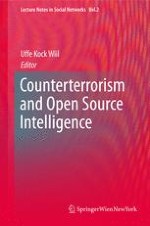2011 | OriginalPaper | Chapter
Finding Hidden Links in Terrorist Networks by Checking Indirect Links of Different Sub-Networks
Authors : Alan Chen, Shang Gao, Panagiotis Karampelas, Reda Alhajj, Jon Rokne
Published in: Counterterrorism and Open Source Intelligence
Publisher: Springer Vienna
Activate our intelligent search to find suitable subject content or patents.
Select sections of text to find matching patents with Artificial Intelligence. powered by
Select sections of text to find additional relevant content using AI-assisted search. powered by
